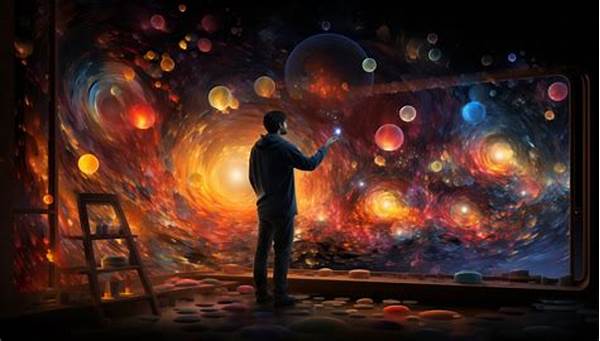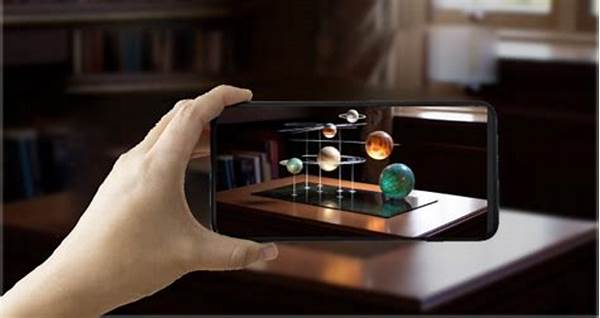The intersection of art and technology is evolving rapidly, and one of the most intriguing developments is the integration of traditional art into the blockchain. This innovative shift is not just a trend but a significant transformation that offers artists new opportunities and challenges. The digital age demands adaptability, and moving traditional art to blockchain is becoming a pivotal strategy for many in the art community.
Read Now : Tips For Artists Working With Galleries
Transforming the Art World
Blockchain technology is revolutionizing various sectors, and the art world is no exception. Moving traditional art to blockchain presents a myriad of opportunities that were previously unimaginable. This shift facilitates higher security and traceability through blockchain’s decentralized ledger system, ensuring that both artists and buyers are protected from common issues such as counterfeiting and fraud. Furthermore, it provides artists with a new platform to monetize their work, reaching a global audience without the traditional limitations of physical gallery spaces. As artists and collectors increasingly recognize the value of blockchain, it paves the way for a more transparent and inclusive art market. In essence, moving traditional art to blockchain not only preserves the integrity of artworks but also modernizes their distribution and appreciation in an ever-connected world.
Artists’ Perspective on Blockchain Integration
1. Many artists are intrigued by the potential of moving traditional art to blockchain, as it can expand their market beyond geographical borders.
2. The immutable nature of blockchain assures artists that their work is preserved authentically, which instills confidence in their creations.
3. Moving traditional art to blockchain can provide artists with residual income opportunities through smart contracts that ensure they earn a percentage of future sales.
4. Blockchain can democratize the art world, allowing lesser-known artists to gain recognition without relying on traditional galleries and agents.
5. Artists using blockchain can directly engage with their audience, fostering a community that values transparency and accessibility.
The Impact on Art Valuation
Moving traditional art to blockchain not only influences how art is sold but also how it is valued. Conventionally, art valuation has been subjective, often swayed by trends and influencers within the market. Blockchain offers a concrete method by providing a transparent record of transactions and ownership, thereby enabling a more objective valuation of artworks. This transparency also empowers collectors and investors to make informed decisions based on accurate historical data. Consequently, moving traditional art to blockchain creates a more stable and reliable art market that benefits both creators and consumers. The enhanced accountability and provenance tracking play vital roles in maintaining art’s value over time, ensuring that the cultural and financial worth of artworks is preserved.
Challenges and Opportunities
1. One of the challenges of moving traditional art to blockchain is the lack of knowledge among artists about the technology.
2. Integrating traditional art into digital platforms might face resistance from art purists who value conventional methods.
3. Moving traditional art to blockchain entails a significant initial investment in time and resources for artists and platforms.
4. Security concerns exist, as blockchain technology, despite being secure, is still susceptible to cyber attacks when not properly managed.
Read Now : Building Confidence In Art Ownership
5. Many artists are excited by the opportunity to tokenize their art, creating limited digital copies that add uniqueness and scarcity.
6. Moving traditional art to blockchain can change the way art is curated and displayed, shifting from physical galleries to virtual exhibitions.
7. Legal and regulatory issues remain a hurdle, as blockchain in art is still a relatively new concept with evolving guidelines.
8. The environmental impact of blockchain transaction processes, often energy-intensive, is another concern that artists and collectors must consider.
9. Moving traditional art to blockchain can foster collaborations among technologists and artists, leading to innovative projects and practices.
10. The potential for increased engagement with audiences globally is a motivating factor for artists to explore blockchain technology.
Potential for Future Growth
As the intersection of traditional art and blockchain technology continues to grow, the possibilities seem endless. In the coming years, moving traditional art to blockchain could redefine how we perceive ownership and interaction with art. Artists are no longer confined to local audiences but can showcase their work to a worldwide community of collectors and enthusiasts. This technological evolution not only democratizes the art world but also empowers creators to explore innovative formats and methodologies. By moving traditional art to blockchain, creators can ensure their work remains relevant and vital in a digital age. This forward-thinking approach encourages a more diverse art ecosystem, allowing for broader participation from a variety of cultural and geographical backgrounds.
Artists’ Transition to Blockchain
For many artists, the transition to blockchain-enabled platforms represents an exciting new chapter. This shift encourages them to rethink how their art can be experienced, collected, and valued. By moving traditional art to blockchain, artists adopt a more flexible and resilient approach to distribution and sales, bypassing the conventional barriers of gallery representation and exhibition costs. Moreover, blockchain provides a platform for artists to experiment with digital formats, which can complement their traditional works. As artists navigate this new landscape, they must weigh the benefits of accessibility and global reach against the perceived loss of physical intimacy with their work. Ultimately, moving traditional art to blockchain offers a pathway to innovation while honoring the timelessness of their craft.
Conclusion and Summary
As the art world undergoes transformative changes through digital innovation, moving traditional art to blockchain stands out as a pivotal development. This progression not only enhances art’s accessibility and security but also potentially reshapes the entire industry by offering more equitable opportunities for artists and collectors alike. Blockchain’s decentralized nature ensures that all stakeholders benefit from a more transparent and traceable art market. While there are hurdles to overcome, such as regulatory challenges and technological learning curves, the future of art on the blockchain looks promising. Artists and collectors who embrace this shift will likely be at the forefront of an exciting new chapter in art history. Moving traditional art to blockchain could lead to a more interconnected and dynamic art ecosystem, enriching cultural exchange and appreciation in unprecedented ways.



